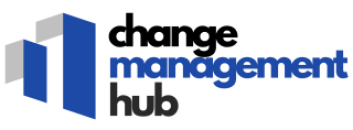-large-teaser.webp)
The Basics of Scrum of Scrums
Setting the Foundations for Effective Coordination
Scrum of Scrums provides a significant layer of communication and coordination within the agile framework, especially when multiple teams are involved. This methodology is essential for organizations striving to scale their agile practices, like the Scaled Agile Framework (SAFe). In essence, the Scrum of Scrums operates as a meta-scrum, designed to integrate the efforts of various scrum teams, allowing them to effectively collaborate and avoid common pitfalls often faced in large-scale projects. Engaging in a Scrum of Scrums meeting, commonly referred to as SoS, involves representatives from each scrum team. These individuals, often the scrum master or a designated team member, focus on identifying, articulating, and addressing challenges that might impact multiple teams. The result is a streamlined approach to project management, where potential bottlenecks are swiftly identified and resolved across the development process. Integrating multiple teams in this manner brings about transformative strides in software development, as it nurtures seamless collaboration between the scrum teams and product owners. Moreover, SoS acts as a conduit through which teams can align their objectives with the overarching goals of the organization’s agile strategy. For those interested in reducing the lead time to product delivery through coordinated efforts, embracing a rapid improvement methodology can enhance the effectiveness of Scrum of Scrums. Such approaches ensure that iterative cycles are optimized, leading to significant improvements across the team dynamics and the project's lifecycle. Ultimately, the foundations laid by a well-coordinated Scrum of Scrums not only streamline agile processes within organizations but also fortify the agile framework itself, setting the stage for sustainable and scalable growth in software development initiatives.Integrating Scrum of Scrums with SAFe
Aligning Multiple Teams for Unified Objectives
In the realm of agile frameworks, the integration of Scrum of Scrums within the Scaled Agile Framework (SAFe) is pivotal for organizations that seek to align multiple teams to work towards unified objectives. As many companies endeavor to scale their agile efforts, SAFe allows them to maintain the agility of individual scrum teams while ensuring overarching goals are met effectively. At the heart of this integration is the synchronization of numerous, autonomous scrums. To accomplish this, a dedicated Scrum of Scrums meeting convenes team representatives—often comprising a scrum master or lead from each agile team. This forum is crucial for assessing interdependencies, addressing impediments, and coordinating releases. Such synchronization within the SAFe framework encourages robust communication and collaboration among scrum teams. It facilitates a shared understanding of product development objectives which aligns with the principles of SAFe.Role of the Release Train
Central to the integration of Scrum of Scrums within SAFe is its synergy with the release train. This concept acts as an organizational backbone in which coordinated series of iterations lead to a shared product deliverable. Through effective project management, the release train captures the essence of agile—ensuring continuous delivery and aligning scrum teams under a cohesive release structure while weaving in the nuances of scaled agile education. In practice, the Scrum of Scrums framework melds within this release train through rigorous planning and strong oversight. This integration often entails a scrum master, product owner, and various team members coordinating efforts towards the shared end goals. They implement agile practices, uphold the agile methodology, and ensure their collective insights contribute to the larger strategic initiatives.Best Practices to Enhance SAFe
While integrating Scrum of Scrums with SAFe, best practices emerge from continuous learnings and adherence to agile principles. Teams are encouraged to maintain a rhythm of daily scrum activities, foster open communication across teams, and emphasize consistent outcome delivery. These practices do not only involve the scrum teams but also require agile team leaders to facilitate an environment of continuous improvement and adaptive learning. Establishing effective frameworks, such as those within SAFe, enables organizations in software development and other industries to harness the benefits of agile scrums at scale. The endorsement of master certification and comprehensive training for team members stands as a testament to a commitment to growth, both strategically and across scrum scales. For further understanding of SAFe's substantial role in shaping corporate IT organizations, refer to the role of SAFe in corporate IT organizations.Benefits of Using Scrum of Scrums in Change Management
Harnessing the Impact of Scrum of Scrums on Change Management
Scrum of Scrums offers numerous advantages when it comes to facilitating change management within organizations. This agile framework is especially beneficial when applied in scaled environments like the Scaled Agile Framework (SAFe). Here’s why Scrum of Scrums is instrumental in driving change effectively:
- Enhanced Coordination: For projects requiring collaboration between multiple teams, Scrum of Scrums serves as a pivotal meeting. These meetings allow teams to synchronize their efforts and align on common goals. This coordination is vital in ensuring that change is not only seamless but goes according to the plan, mitigating conflicting priorities and facilitating a smoother transition.
- Improved Communication: Regular meetings in the form of Scrum of Scrums help break down communication barriers between teams. This fosters an environment where feedback is openly shared, and potential issues can be addressed promptly, which is crucial during the change process.
- Agile Approach to Problem-Solving: By instilling agile principles, Scrum of Scrums enables teams to quickly adapt to changes. This flexibility is essential as teams often need to pivot and adjust strategies in response to feedback or unforeseen developments during transformation initiatives.
- Incorporating Best Practices: Leveraging Scrum of Scrums can promote adherence to best practices in product development and software development. By establishing a feedback loop, organizations can identify areas for improvement and swiftly implement necessary changes, enhancing overall project management effectiveness.
- Global Perspective: In a world where remote work and global teams are becoming the norm, Scrum of Scrums provides a platform for bringing together team members from diverse geographies. This integration helps in aligning objectives and fostering a unified approach to change implementation across organizations.
Furthermore, organizations that utilize Scrum of Scrums within their SAFe implementations can leverage innovative test environments to experiment and validate changes, ensuring minimal disruptions and enhancing the overall change management process.
Challenges and Solutions in Implementing Scrum of Scrums
Overcoming Hurdles in Implementing Scrum of Scrums
Implementing Scrum of Scrums in an organization can present several challenges, particularly when scaling agile across multiple teams. While this framework is designed to streamline communication and coordination, it requires diligent execution to reap its benefits. Here are some common challenges and solutions to keep your initiative on track:
- Synchronization Issues: Bringing multiple teams together effectively can be challenging. It requires consistent planning of scrums meetings to ensure team members are on the same page. Utilize a release train to coordinate work among various scrum teams.
- Lack of Clarity in Roles: Each team member and scrum master must understand their responsibilities. Clear delineation of roles is crucial in preventing overlap and confusion. Leveraging a robust agile framework helps define these roles within the context of SAFe.
- Communication Breakdowns: With larger teams, communication can easily become convoluted. Regular updates and the integration of agile scrum practices can foster better communication pathways.
- Cultural Resistance: Change management often faces pushback, particularly from those accustomed to traditional project management methodologies. Promote scrum master certification to enhance understanding and buy-in.
- Resource Allocation: Balancing resources effectively across agile team structures is fundamental. Inadequate resource management can derail projects, hence scaling must be carefully monitored to ensure project success.
Organizations should anticipate these challenges and proactively implement strategies to address them. By doing so, they can facilitate smoother transitions and maintain momentum in their software development initiatives.
Case Studies: Successful Implementations
Case Examples Where Scrum of Scrums Made an Impact
Scrum of Scrums can serve as a critical component in project management, offering real-world examples of its effectiveness within the Scaled Agile Framework (SAFe). These case examples highlight organizations that successfully integrated Scrum of Scrums, enabling them to manage multiple teams and scale their operations while maintaining agility and efficiency.
One company, leveraging the Scrum of Scrums approach, managed to coordinate between its various scrum teams effectively. By facilitating regular scrums meetings, the organization could synchronize across different product teams, ensuring that each team's development efforts aligned with overall project goals. This alignment led to a smoother workflow, minimized disruptions, and more cohesive software releases.
In another example, an enterprise operating within a complex framework of scaled agile practices employed the Scrum of Scrums to enhance communication between different agile teams. The regular meetings of scrum masters across the teams allowed the organization to address common challenges, share best practices, and even aid scrum team members in their understanding of the broader project context.
Organizations that adopted this method not only witnessed improved project management but also observed an uplift in team motivation and collaboration. They found that streamlining communication channels made it easier to handle blockers that individual teams faced, thanks to insights gained during these scaled meetings.
Moreover, the practice of Scrum of Scrums proved invaluable in projects involving multiple distributed teams across geographical locations. It helped maintain a unified vision and supported consistency in agile product development. This reduction in complexity and enhancement of clarity within the communication hierarchy were vital for visualizing progress and facilitating smooth project execution.
Such successful implementations demonstrate the transformative potential of Scrum of Scrums when integrated thoughtfully within the SAFe framework, offering a testament to its capability in orchestrating work across several agile teams efficiently.
Best Practices for Scrum of Scrums in SAFe
Optimizing Scrum of Scrums for Effective Outcomes
To leverage the full potential of the Scrum of Scrums, organizations must implement several best practices. These practices help in facilitating communication, alignment, and efficiency across multiple teams and ensure that the process enhances overall project management and product delivery.
Firstly, always maintain a clear purpose and agenda for every scrums meeting. The agenda should focus on resolving cross-team impediments, coordinating dependencies, and aligning on priorities. This structured approach ensures that meetings remain productive and goal-oriented.
Secondly, appoint an experienced Scrum Master to facilitate these meetings. The Scrum Master plays a crucial role in the agile framework by guiding discussions and ensuring effective communication amongst team members. Their expertise in both scrum and scaled agile frameworks ensures that the sessions yield beneficial outcomes.
Thirdly, enhance collaboration by ensuring active participation from all involved teams. Encourage input from each scrum team, including product owners, to discuss potential conflicts and solutions. This participation fosters a culture of transparency and collective problem-solving.
Also, consider integrating digital tools that support agile team management and project tracking. Tools like digital Kanban boards or agile project management software can streamline the tracking of tasks and dependencies across multiple agile teams, providing a visual representation of progress across the board.
A robust feedback loop is essential. Regularly solicit feedback from involved teams to iterate and refine the process. This ongoing improvement helps adapt the Scrum of Scrums to the dynamic nature of software development and different team compositions.
Lastly, adopt a flexible mindset. The scale and scope of projects can vary markedly, and so should the approach to managing scrums. Being open to adjustments keeps the process aligned with the project's evolving needs and ensures sustained benefits in change management and product delivery.













